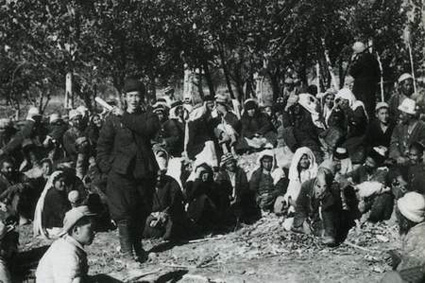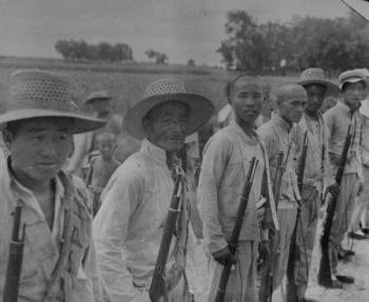 |
Peoples' movements and protests |
 |
|
MobilizationsThe Grundtvigian peasant movementIrish Land LeagueBavarian Farmers’ UnionFarmer’s AllianceThe Zapatists of MorelosKisan SabhaThe Chinese peasant movementThe Vietnamese peasant movementLa ConvenciónKRRS and Shetkari SanghatanaFrench peasant resistanceThe Zapatists of Chiapas Via Campesina
|
The Chinese peasant movement
In China, there was a traditional form of opposition to the authorities – the secret societies. These were usually influenced by ideals of equality and had been active in all dynastic shifts in the past. In the secret societies, farmers but mainly groups with mobile professions such as sailors, coal miners, smugglers, gathered. During the disintegration of the 19th century and concessions to the colonial powers, the secret societies flourished. One, Taiping, almost made revolution the 1850s but was defeated. When the empire was overthrown in 1912, the secret societies were highly active but had no organization at the All-Chinese level and were forced to hand over overall control to others. This did not prevent them from having power locally. The ”others” were partly military, so-called warlords, as well as a coalition between Shanghai’s merchants and a youth movement against colonialism that developed into the Chinese Communist Party. In the beginning, the military had the upper hand and used it mainly to enrich themselves. This was considered by both merchants and communists to be unserious, which is why they formed a joint local regime in Guangzhou that dealt with organizing an army with Russian support. They also organized trade unions and peasants’ associations, mainly in the south and in the Yangtze Valley, to resist the military – the active ones were to a large extent members of the secret societies that finally found a modern, powerful structure. At the same time, women were organized in perhaps the most comprehensive mobilization of women's movements<LÄNK> ever. In 1926, they began to conquer China. It was easy. The peasants rose and the apparatus of the warlords fell apart. But the peasants went on to organize their villages themselves. It was more than the merchants in Shanghai had imagined why they turned their army against the peasants. On the plains the peasants’ movement fell apart. But not in the inaccessible mountain areas. Activists from peasant associations, secret societies and the Communist Party gathered there and built a pseudo-state with 10 million people in four areas out of reach of the bourgeois armies. This organization went much further than the secret societies had done. These had often contented themselves with ”protecting the poor and attacking the rich”. Now a society was built up with general compulsory schooling, land reform and the construction of industries for groceries and agricultural implements. The goods were also sought after in the areas controlled by the Shanghai bourgeoisie and the prestige of the peasant movement grew. After four failed campaigns, the merchant’s army, with German support, managed to crush all peasant-controlled areas except one in 1935. The survivors retreated there – ”The Long March” – to Shensi in the far northwest. The peasant movement was saved by the Japanese occupation in 1939. For it turned out that the bourgeois regime that ruled China couldn’t decide what it wanted. In practice, it was hostile enough to the Japanese to wage war on it, but not keen enough for the nationalist Chinese to trust it. As individuals, they were more anxious to profit from the war, so corruption spread. In contrast, the peasant movement
resisted – they had to because
the Japanese applied the scorched earth tactics towards China. This
gave the peasant movement broad support. After the war, China fell
like a ripe fruit into its hands in a few months. Nevertheless, the peasants largely managed to free themselves from control in connection with the disappearance of much of the Communist Party’s power during the Cultural Revolution. But the liberation was mainly economic and individual. This has led to some succeeding individually better than others and to growing class divisions in the countryside, while the party still has enough power to prevent political movements that could do something about that. The pictures above were taken during the land reform after 1949. In the top picture the old property registers are set on fire, in the next picture the farmers have a meeting. The picture below shows farmers participating in the takeover.
Reading
|


